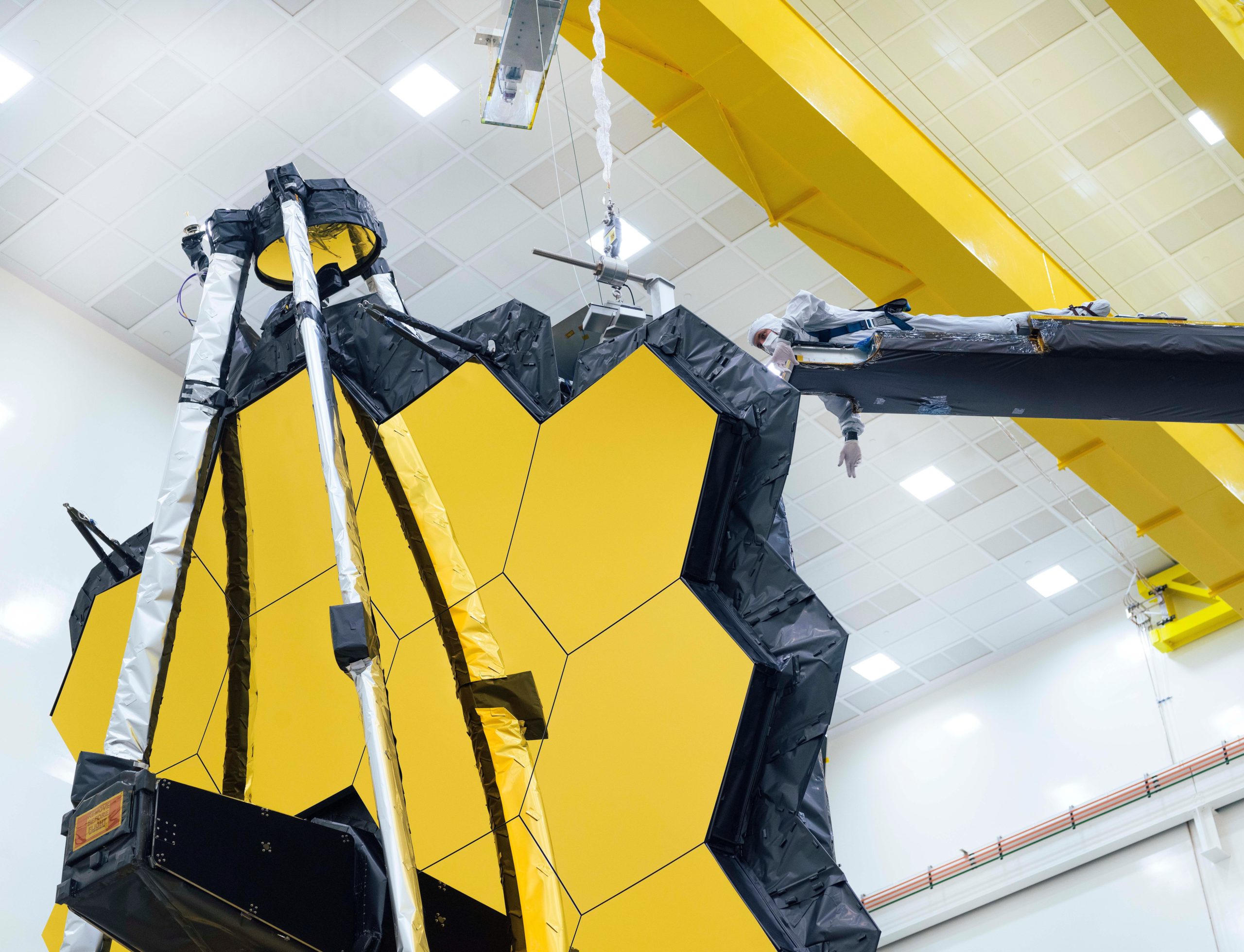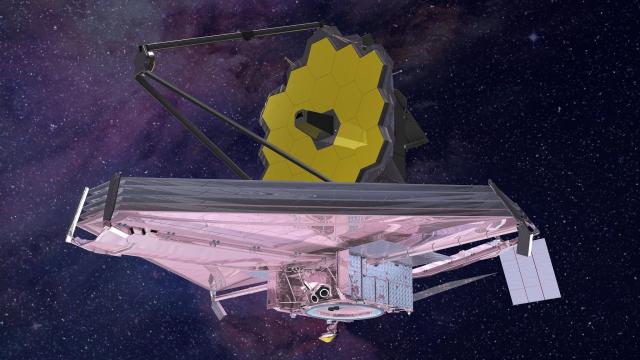The upcoming James Webb Space Telescope, already seven years behind schedule, will not launch on Halloween as planned, which is just as well, given the ominous date and this project’s history of bad luck. For once, the delay is not due to the telescope, but rather the rocket that will deliver it to space.
We need to remain patient, but hopefully not for much longer.
As confirmed yesterday during a European Space Agency media briefing, the James Webb Space Telescope will not launch on October 31 as planned. Should one of two unrelated commercial launches of an Ariane 5 rocket go well in the coming months, however, a launch could happen as early as mid-November. The original timeline had the JWST launching in 2014 — and then 2018, then 2019, then summer 2020, then March 2021, then this Halloween — so a few more weeks of waiting isn’t a big deal. Or at least, that’s what I’m telling myself.
No doubt, it’s hard to be patient, given the promise of what looks to be the most remarkable telescope ever built. Once in space, the telescope will view the universe in infrared, scan the atmospheres of distant exoplanets, gaze upon stars, and detect ancient galaxies that popped into existence a mere 150 million years after the Big Bang.

The project, an international partnership involving NASA, ESA, and the Canadian Space Agency, has been beset with delays, including a strengthening of its sunshield that took longer than anticipated. The estimated cost of the project, at $US9.7 ($12) billion, is nearly double the original quote, according to a report put out by the the Government Accountability Office last month.
And now we have another delay, this time the result of an anomaly experienced during two launches of Arianespace’s Ariane 5 rocket last year. As the GAO report stated, “Ariane launches of this vehicle type are currently postponed” until the ESA and Arianespace “investigate unexpected vehicle accelerations” that happened when the fairing separated during the two launches. The payloads were successfully deployed in both cases, but Arianespace “must demonstrate that the issue has been corrected on at least one [of two scheduled] launches” before JWST can go up. Arianespace has not disclosed the dates of the upcoming launches, but the first could happen in July, SpaceNews reports.
Much of this was confirmed at the ESA media briefing held yesterday, which served as a preview of the upcoming JWST launch and as a primer on the telescope’s capabilities. Representatives from NASA, ESA, and CSA participated in the event, and the general consensus was that the Ariane 5 rocket is ready and that the launch of JWST in mid-November is likely.
Thomas Zurbuchen, NASA’s science mission director, said the telescope will be shipped to ESA’s launch site in French Guiana in late August, after which time it’ll take 55 days to pack the device in the launcher. He described the current timeline for a launch in November as “approximately correct.”
Daniel de Chambure, acting head of Ariane 5 adaptations and future missions at ESA, said the “origin of problem has been found,” and “corrective actions have been taken,” adding that the qualification review has begun, “so we should be able to confirm all that within a few days or weeks.” The anomaly, he reiterated, “will not jeopardise the mission.” No further details about the problem and how it was resolved were provided.
Zurbuchen said Arianespace has been transparent throughout the process.
“We’ve had all the information that we need. We’ve had in-depth technical discussions with all parties aligned with one goal, and that is to create mission success.” To which he added: “We are in the business of rocket science, so we’re used to problems.”
Kind of a foreboding thing to say, but at least things appear to be moving forward. Arianespace has reserved a window to launch JWST from October 31 to early December, so there’s a decent chance the telescope will launch this year — but we’ve been disappointed before. When it comes to the James Webb Space Telescope, we’ll believe it once we see it parked at the second Lagrange point, some 1.5 million kilometres from Earth.
